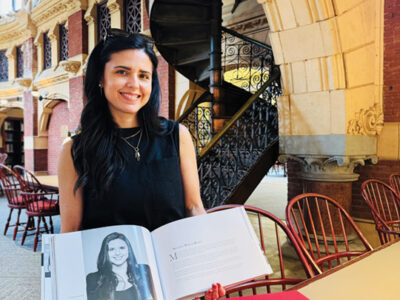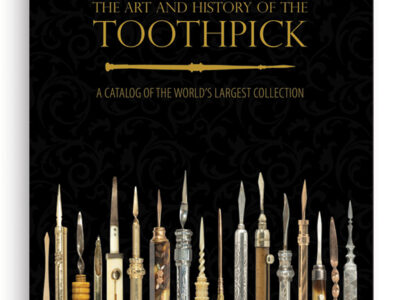
It’s safe to say that the otherwise fortunate William Hamilton C1762, owner of the 600-acre Woodlands estate in West Philadelphia, did not have a good Revolutionary War.
Twice accused of treason for allegedly aiding British occupying forces, Hamilton (1745-1813) was tried and acquitted in 1778 because of a torn piece of evidence, and then imprisoned and released in 1780. At his treason trial, according to one account, a key witness declined to testify against him because they were friends.
Hamilton’s Loyalist sympathies also were no bar to his longstanding friendship with Thomas Jefferson, with whom he shared a passion for both architecture and botany. “I never considered a difference of opinion in politics, in religion, in philosophy, as cause for withdrawing from a friend,” Jefferson wrote Hamilton on April 22, 1800, before entreating him for some seeds. The third president of the United States would later repay the favor by giving Hamilton seeds from the 1804-06 Lewis and Clark Expedition.
Today, The Woodlands’ buildings, landscape, and cemetery comprise a 54-acre National Historic Landmark District, open for toursand educational programs, recreation, special events, and burials. Pennhistoric-preservation, landscape-design, and archaeology classes study at the site. In recent months, The Woodlands has made literary news as an inspiration for Elizabeth Gilbert’s well-reviewed 2013 historical novel, The Signature of All Things, about a family of botanists. The novel’s setting, the fictional White Acre estate, draws on the original gardens and architecture of The Woodlands, including its carriage house.
The Woodlandshas “a very layered history,” says Jessica Baumert, executive director since 2011. That history is intimately interwoven with that of the University, which sits entirely on land once owned by Hamilton, a graduate of what was then the College of Philadelphia.
The link is evidenced by place names such as Hamilton Walk and Woodland Walk. It is marked, too, by the burial in Woodlands Cemetery of such Penn notables as dental pioneer Thomas W. Evans [“Crowns and Confidences,” Nov|Dev 1999] and the Beaux Arts architect (and Penn professor of design) Paul Philippe Cret Hon1913, whose achievements include the Benjamin Franklin Bridge, the Barnes Foundation in Merion, and the cemetery’s Woodland Avenue gates. Those gates are decorated with the emblem of a winged hourglass, an apparent play on the Latin expression Tempus fugit (time flies).
Time has exacted ravages on The Woodlands itself, especially its unfurnished mansion ofstone, brick, and scored stucco. Mark B. Thompson Associates, a Philadelphia architectural firm, isoverseeing a $1 million state-funded restoration of the north terrace and cryptoporticus, an underground passageway used by Hamilton’s workers to move inconspicuously below the house and around the property. Ground-breaking is scheduled to coincide with a June benefit, and Baumert says she is hoping to raise an additional $500,000 for exterior renovations.
The cryptoporticus reflects another complicated aspect of Hamilton’s history.“He had several domestic slaves—two to four—and he had many servants who were not slaves, some of whom were African American, one of whom was his lead gardener at one point,” says Aaron Wunsch, assistant professor in Penn’s Graduate Program in Historic Preservation and vice president of The Woodlands’ board of directors.
This past September, bolstered by a $300,000 grant from the William Penn Foundation, The Woodlands embarked on an 18-month master-planning process to determine how best to preserve, restore, and interpret the site, as well as generate revenue and foster connections with the surrounding community. Page Talbott G’76, Gr’80, who co-curated the new exhibition at Philadelphia’s Benjamin Franklin Museum [“Alumni Profiles,” Sept|Oct 2013], is leading the interpretative planning, Baumert says.
After he came of age in 1766, officially inheriting 356 acres, William Hamilton built a Georgian-style country estate with a two-story columned portico facing the Schuylkill River. He later inherited additional acreage from his uncle.
In the late 1780s, after a trip to England, Hamilton transformed The Woodlands into what Baumert calls “the first fully realized Federal architecture in North America.” Influenced by the British architects Robert and James Adam, Hamilton expanded the original house and, for entertaining, built grand, high-ceilinged oval rooms decorated with plaster friezes, marble fireplaces, and sculptural niches.
Wunsch describes Hamilton as “the leading plant collector and gentleman horticulturist in the Mid-Atlantic,” adding that his life “revolved around collecting and displaying plants, cultivating a sophisticated version of an English garden, and having a house that captured the leading edge in English architecture of the late 18th century.”
Hamilton cultivated some 10,000 species of plants and trees, and he is credited with introducing the Ginkgo, red China rose, Lombardy poplar, Norway maple, and the invasive Ailanthus tree to this country.
Jefferson raved that Hamilton’s gardens were unsurpassed outside of England. Approaching the carriage house and mansion on a long, winding drive through wooded terrain, visitors encountered what Wunsch calls “a sequence of very carefully constructed views,” offering glimpses of the city. Closer to the house, the woods gave way to a large lawn.
On the southern, riverfront side of the house, visitors could traverse a serpentine path with river vistas “across wonderful glimmering wetlands,” Wunsch says. Passing a grotto, they would reach a hothouse-greenhouse complex housing Hamilton’s most exotic plants.
After Hamilton’s death, some of his holdings were sold, and increasing urbanization threatened his pastoral enclave. Largely to preserve open space, Eli K. Price, a Penn trustee, founded the Woodlands Cemetery Company in 1840. (Price would later help create Fairmount Park.) An early example of a “rural cemetery,” Woodlands was a competitor to Laurel Hill Cemetery, founded two years earlier.
The long list of notables buried at The Woodlands includes the artists Thomas Eakins and his wife, Susan; the sculptor William Rush; the surgeon Samuel Gross; and a full complement of old Philadelphia names such as Drexel, Biddle, and Bache.
It’s still possible tobuy a cemetery plot here, and the mansion welcomes weddings and other special events. Joggers run along a well-worn cemetery trail, and dog walkers abound. But outside West Philadelphia, the site tends to be overlooked. It is, says Baumert, “one of these hidden treasures that we’re trying to let the world know exists.”
—Julia M. Klein




